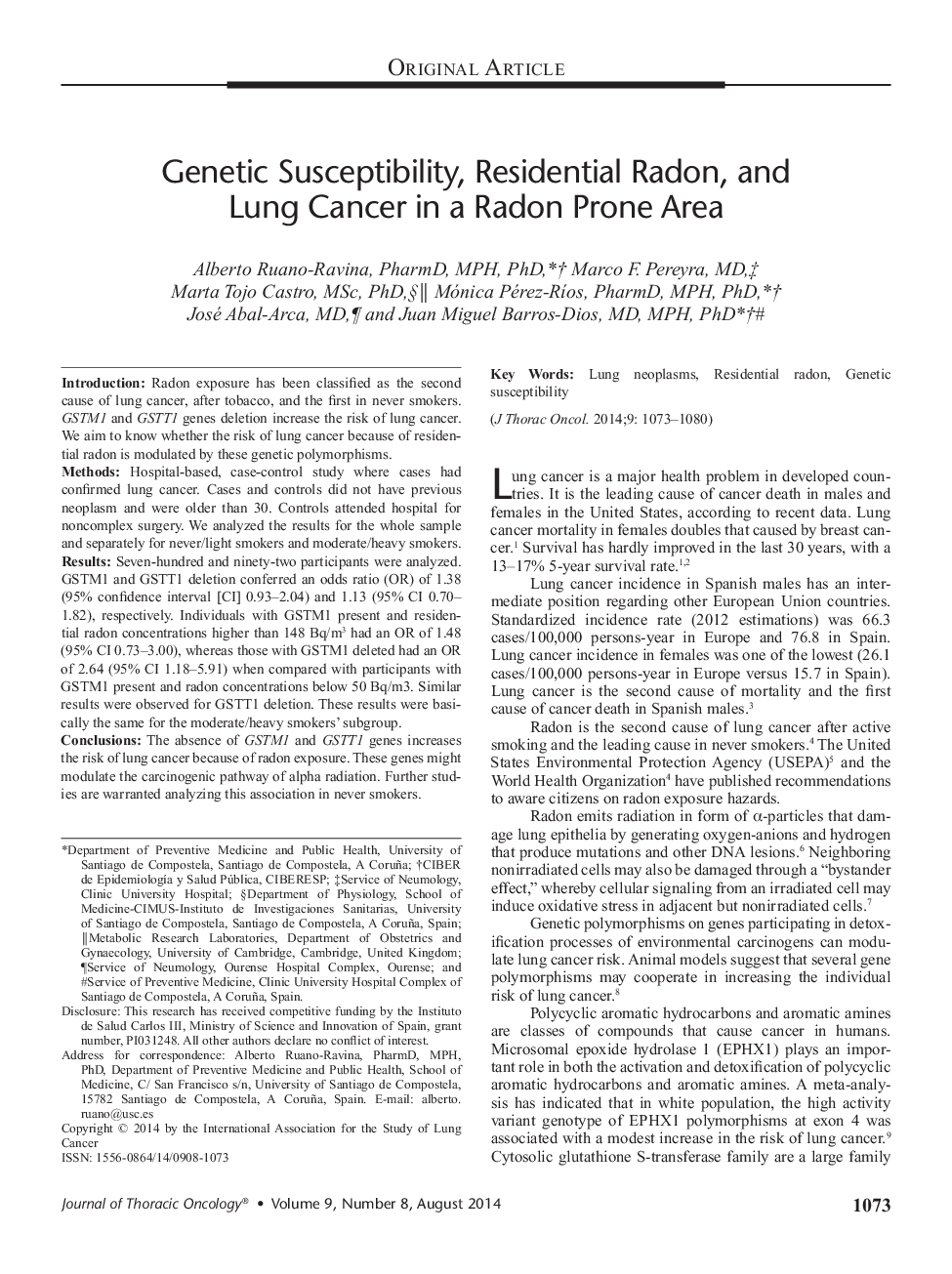| Article ID | Journal | Published Year | Pages | File Type |
|---|---|---|---|---|
| 3989796 | Journal of Thoracic Oncology | 2014 | 8 Pages |
IntroductionRadon exposure has been classified as the second cause of lung cancer, after tobacco, and the first in never smokers. GSTM1 and GSTT1 genes deletion increase the risk of lung cancer. We aim to know whether the risk of lung cancer because of residential radon is modulated by these genetic polymorphisms.MethodsHospital-based, case-control study where cases had confirmed lung cancer. Cases and controls did not have previous neoplasm and were older than 30. Controls attended hospital for noncomplex surgery. We analyzed the results for the whole sample and separately for never/light smokers and moderate/heavy smokers.ResultsSeven-hundred and ninety-two participants were analyzed. GSTM1 and GSTT1 deletion conferred an odds ratio (OR) of 1.38 (95% confidence interval [CI] 0.93–2.04) and 1.13 (95% CI 0.70–1.82), respectively. Individuals with GSTM1 present and residential radon concentrations higher than 148 Bq/m3 had an OR of 1.48 (95% CI 0.73–3.00), whereas those with GSTM1 deleted had an OR of 2.64 (95% CI 1.18–5.91) when compared with participants with GSTM1 present and radon concentrations below 50 Bq/m3. Similar results were observed for GSTT1 deletion. These results were basically the same for the moderate/heavy smokers’ subgroup.ConclusionsThe absence of GSTM1 and GSTT1 genes increases the risk of lung cancer because of radon exposure. These genes might modulate the carcinogenic pathway of alpha radiation. Further studies are warranted analyzing this association in never smokers.
